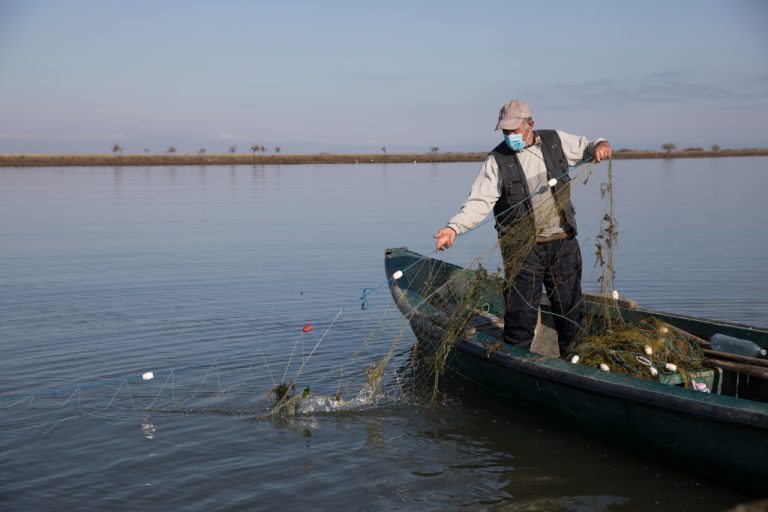
INVESTIGATION: Where did the European Union’s billion euros for the Danube Delta actually go?
Our investigation reveals how the European Union’s €1.114 billion investment to save the Danube Delta passed into the hands of a network of Romanian politicians, NGOs and businessmen.
- By Tristen Taylor, Andreea Pavel, Cristian Leonte, Ingrid Gercama and Nathalie Bertrams
On the 12th of June 2017, a high-level delegation from the European Commission arrived in Tulcea, a small Romanian port city at the edge of the Danube Delta. They were on an urgent mission to save the EU’s €1.114 billion investment to preserve the Delta’s biodiversity and lift its residents out of poverty.
While the investment began in 2014, only 3% of the funds had been spent. The Integrated Territorial Investment (ITI) Danube Delta, the EU’s biggest single point investment in Romania, was on the brink of collapse.
This investment was supposed to be a showpiece on how to save the environment and raise living standards in a UNESCO world heritage site. Moreóver, it is an official part of the 2014 to 2020 partnership agreement between Romania and the European Commission. Johannes Hahn, the current Budget Commissioner, negotiated the agreement and the creation of ITI Danube Delta with the then Romanian Minister for European Funds, Eugen Teodorovici.
In order to address the crisis, the delegation sat down with people who were supposed to be implementing the EU’s investment: the Association for Community Development – ITI Danube Delta (ADI-ITI) was joined by Horia Teodorescu, the president of the Tulcea County Council. According to EU documents, Teodorescu kicked off the meeting at 14:30.
Just before the meeting concluded later that afternoon, one of the Commission’s representatives told ADI-ITI and Teodorescu exactly what the Commission wanted: over one billion worth of projects contracted by the end of 2020.
The representative said, “No obstacles will be placed, it is desired that ADI-ITI work. The contracting process needs to be accelerated…this acceleration being the priority number one of all factors involved.”
We don’t know the name of the representative. The European Commission has redacted the names of the attendees from the minutes.
Over a period of three months, we examined documentation from over one thousand tenders and looked at the wealth declarations of an array of Romanian politicians. We used Romanian databases to establish company ownership structures and financial accounts. Additionally, we received information from confidential sources from within both Romania and the European Commission.
This is the story of how funds meant to protect a unique ecosystem and help isolated villages get sewage systems did not reach the isolated communities but mostly went to the mainland instead of the Delta itself. It is also about how the mechanism fell under the control of politicians and businessmen connected through a web of personal, financial and political relationships.
But the story starts with ITI Danube Delta’s weak lines of accountability, confused programming and serious monitoring issues.
An administrative grey zone
Integrated Territorial Investments are used across Europe to match various EU funds, such as the Cohesion Fund, with regions and their particular problems. The main idea is one or more EU Funds are allocated to a particular ITI. Then regional and local politicians, industry groups and NGOs identify the issues specific to the region. The money then spent on projects that, ideally, solve those problems.
ITI Danube Delta is located in Tulcea County, which is one of Romania’s forty-one counties. These counties are akin to states or provinces and are both the administrative divisions and electoral constituencies of the country. Only 200,000 people live in Tulcea County.
According to the World Bank and as of December 2019, ITI Danube Delta is the largest in Europe. The second largest, Azul in Spain, receives €902 million and covers a region of nine million people.
Eight different EU funds make up the investment. These funds are channelled through Romania’s Ministry of European Funds, the Ministry of Regional Development and Public Administration, and the Ministry of Agriculture and Rural Development. There’s no single ministry with overall control and the multiple lines of reporting are confused.
Subsequently, ITI Danube Delta falls into an administrative grey zone between authorities.
The current Minister of European Investments and Projects, Cristian Ghinea, is from the anti-corruption party, Save Romania Union. About ITI Danube Delta and its setup, he states: “The question is who owns it? Who is responsible? Who is in charge of the process? In practice, because the political gravity was of such a nature, the role of county council of Tulcea was huge.”
Under the confusion of the existing system and according to Minister Ghinea, „Basically the chief of the county becomes the chief of the ITI de facto.”
Professor Alina Mungiu-Pippidi, a Romanian political scientist and anti-corruption expert at the Hertie School in Berlin, concures, „The heads of the counties are the most influential, in Romania, over most projects, including EU funds.”
Given their power of patronage and influence in the parties, county council presidents have earned the moniker ‘barons’ in Romania. And Horia Teodorescu has been the Tulcea County Council president since 2012. His current term of office ends in 2024.
But he is more than just a local politician. During the implementation of ITI Danube Delta, he was an alternate member of the European Union’s Committee of Regions from 2015 to 2020. As an official EU body, the Committee provides advice to the Commission on regional matters, including territorial cohesion and economic policy.
One of Teodorescu’s fellow PSD colleagues in the Committee, Ionel Arsene, is currently facing corruption charges in Romania. Arsene is the president of Neamț county council. Another county council president on the Committee, Csaba Borboly from Harghita county, was charged in 2013 with two offences of abuse of office including forgery. He is currently on trial.
Andrei Bodean, chief prosecutor at Romania’s National Anticorruption Directorate – Constanța Station, says that one of the main patterns for corruption of EU funding is “the civil servant – the one who has access to information, understands the EU funding mechanisms and flow, and who, for himself, family, friends or, in some cases, even for superiors, chooses to defraud funds.”
Making a difference… or not
Covering 3120km2 and according to UNESCO, the Danube Delta is one of the most sparsely populated regions in Europe. Only 15,000 people of various ethnic groups–such as Lipovans, Ukrainians and Moldovans–live in the Delta itself.
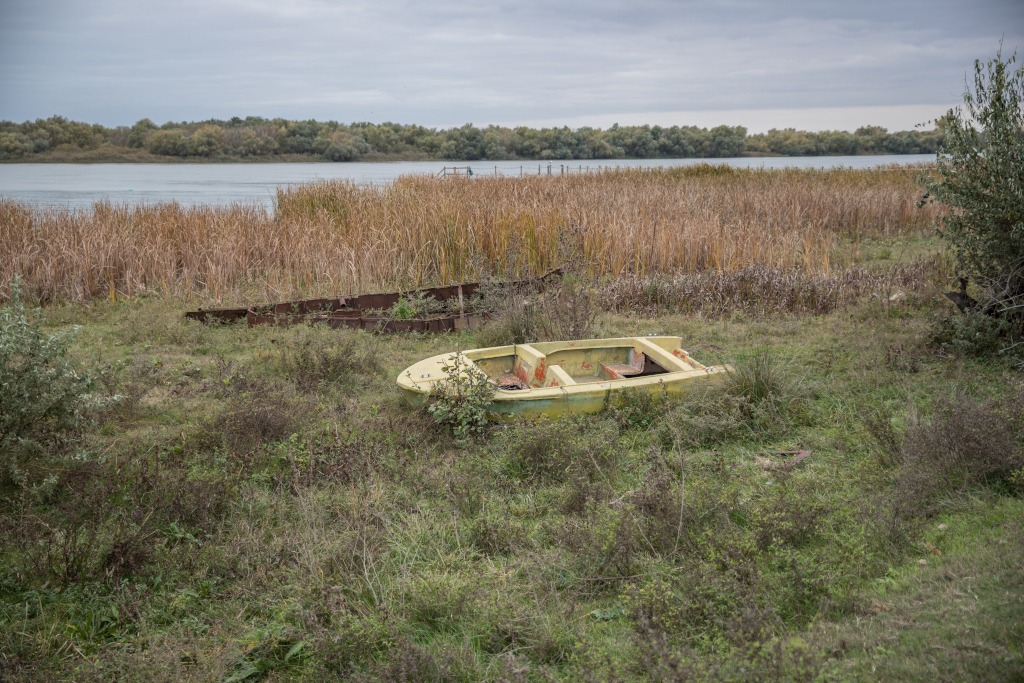
Sulina is typical of the Delta. Once a thriving cosmopolitan city of 10,000 people, Sulina is now almost empty. Since the revolution in 1989, post-communist Sulina has seen its fishing industries die and its shipyard close. Young people have moved out and unemployment has become endemic. Petruța Teampau, an expert in the Delta from Babeş-Bolyai University, says of the past thirty years, “the city continued to slowly destroy itself.”
The EU’s investment was supposed to solve these problems. It was also supposed to promote sustainable fishing and protect 5,000 plant and animal species, including the iconic Beluga sturgeon. The ban on sturgeon fishing removed a key source of income from the area.
Yet after five years, things haven’t gone so well with ITI Danube Delta. Formerly an economist at the University of Bucharest, Florian Marin is currently a specialist in rural development and EU Funds. He states that: „In those isolated communities they don’t have internet, they don’t have toilets, no warm water, they don’t have tools to heat their homes. These problems, from the perspective of the strategy, have been neglected.”
There is also a problem within the design of Integrated Territorial Investments in general: there isn’t a legally prescribed way to monitor them. An anonymous source with insider knowledge of EU funding states: „There is no sort of formal requirement for monitoring of the ITI itself, and that is in my point of view a weak point. It has always been a strange one, the Commission submitted guidelines about this, how theoretically member states should set up overall indicators for ITIs but it was guidance, not regulations.”
Dr. Piotr Żuber from the University of Warsaw simply states that monitoring an ITI like the one for the Danube Delta “is difficult.”
The pace quickens
At the June 2017 meeting, the Commission asked Petre Ilie, the president of ADI-ITI, how long it took to approve a potential project. He replied that it took a maximum of one day and, out of the approximately 600 applications for funding received up until then, the rejection rate was about one percent.
The Commission didn’t seem to be particularly fazed. The Regional and Urban Policy (DG REGIO) representative said later on in the meeting: “There is openness on the part of DG REGIO in order to make this mechanism more flexible. The most appropriate measures must be found to meet the needs, there must be a balance between the need for speed and flexibility.”
The meeting had an impact. As of the end of 2020, the ITI Danube Delta mechanism has allocated €1,101 billion to 1180 projects, most of which haven’t been completed. Only seven projects were earmarked for the protection of the Delta’s unique and fragile environment.
And according to ADI-ITI’s website and as of October 2020, just under 16% for the projects went to the Delta itself. The rest went to the mainland.
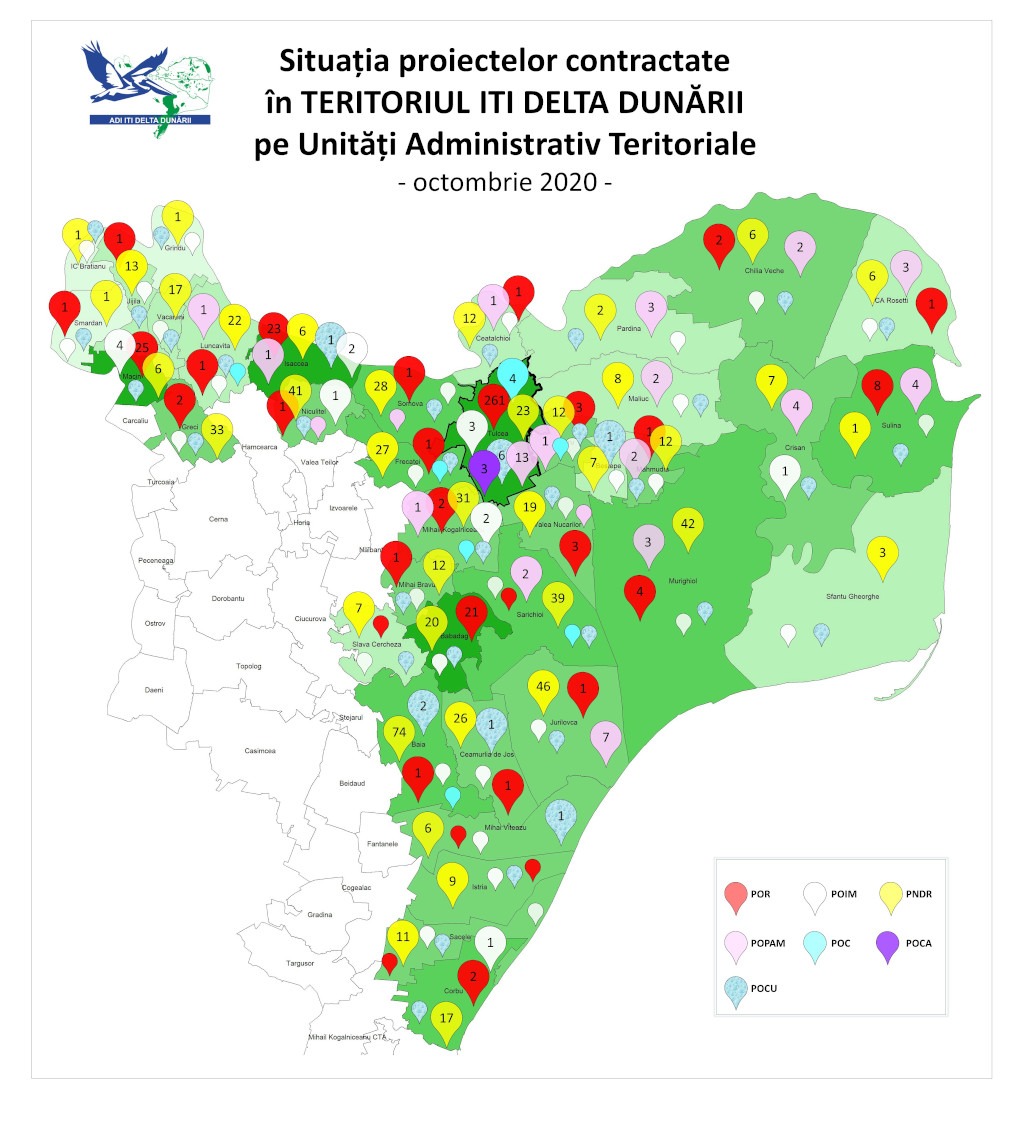
The current investment will be followed by another funding period between 2021 to 2027. However, no decision has been made, either by the Commission or Romania’s Ministry of European Investments and Projects, as to the euro amount.
Political maneuvering
From 2012 to 2019, during the design and most of the implementation of the ITI Danube, the PSD controlled the country, except for between November 2015 to January 2017. A technocratic and independent government, led by Dacian Cioloș, came into power as a result of massive anti-corruption demonstrations against the PSD government of Victor Ponta.
Fraudulent activities centring around Ponta’s right hand man and Deputy Prime Minister, Liviu Dragnea, blighted Ponta’s cabinets. Dragnea is now in jail: a three and half year conviction for corruption. He is also being currently investigated for defrauding EU funds.
The PSD runs Tulcea County. From 1998 to 2010, Horia Teodorescu was the vice-president of the Tulcea social democrats and in 2010 became the president of Tulcea PSD. A position that he remains in today. He is also an elected member of the PSD’s National Political Council, which controls the party.
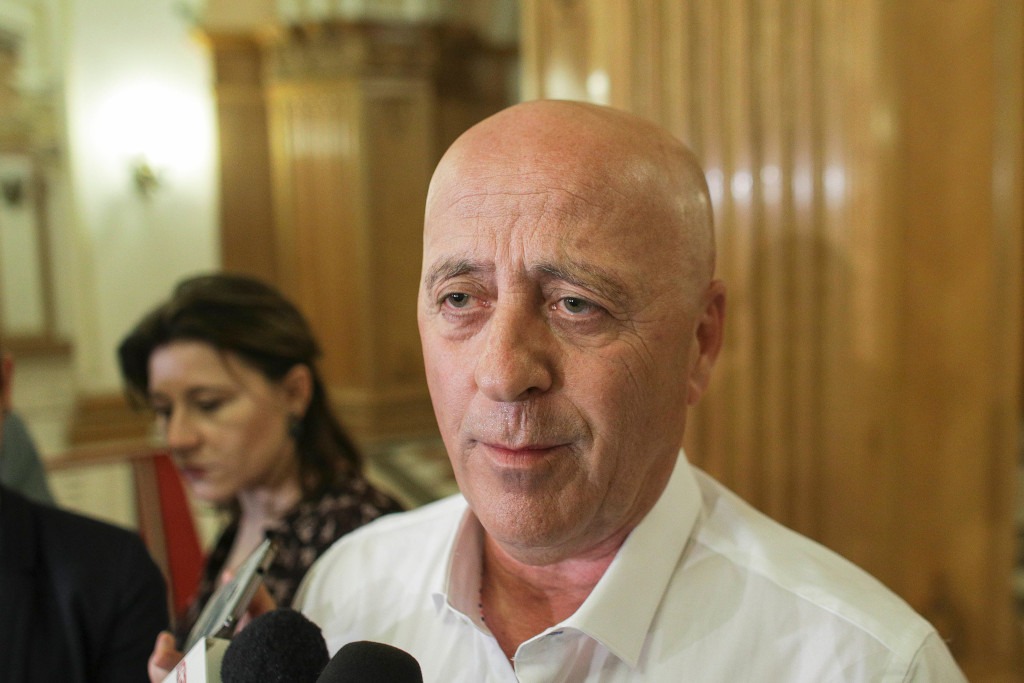
A political scientist from the University of Jena in Germany, Olaf Leiße, describes the PSD as a “left-nationalist power cartel” and in which “access to offices, resources and privileges depends on loyalty to the party.”
Eugen Teodorovici was the Minister of European Funds from 2012 to 2015, after which he had a brief stint as the Minister of Finance. Along with Commissioner Hahn, Teodorovici created ITI Danube Delta. When interviewed in local media last year, Teodorovici stated, “Let’s not forget that the approval of the most important financial package for the county, of 1.2 billion euros, was approved by me, as Minister of European Funds.”
After securing that over a billion euros entered Tulcea County and with Horia Teodorescu’s blessing as the local PSD boss, Eugen Teodorovici represented Tulcea in Romania’s parliament from 2016 to 2020 as a senator.
According to Teodorovici, “My relationship with Mr. Horia Teodorescu is purely institutional and supportive, as it is with those who are part of the local administration of Tulcea County and who I want to increase the quality of life of the inhabitants of this county.”
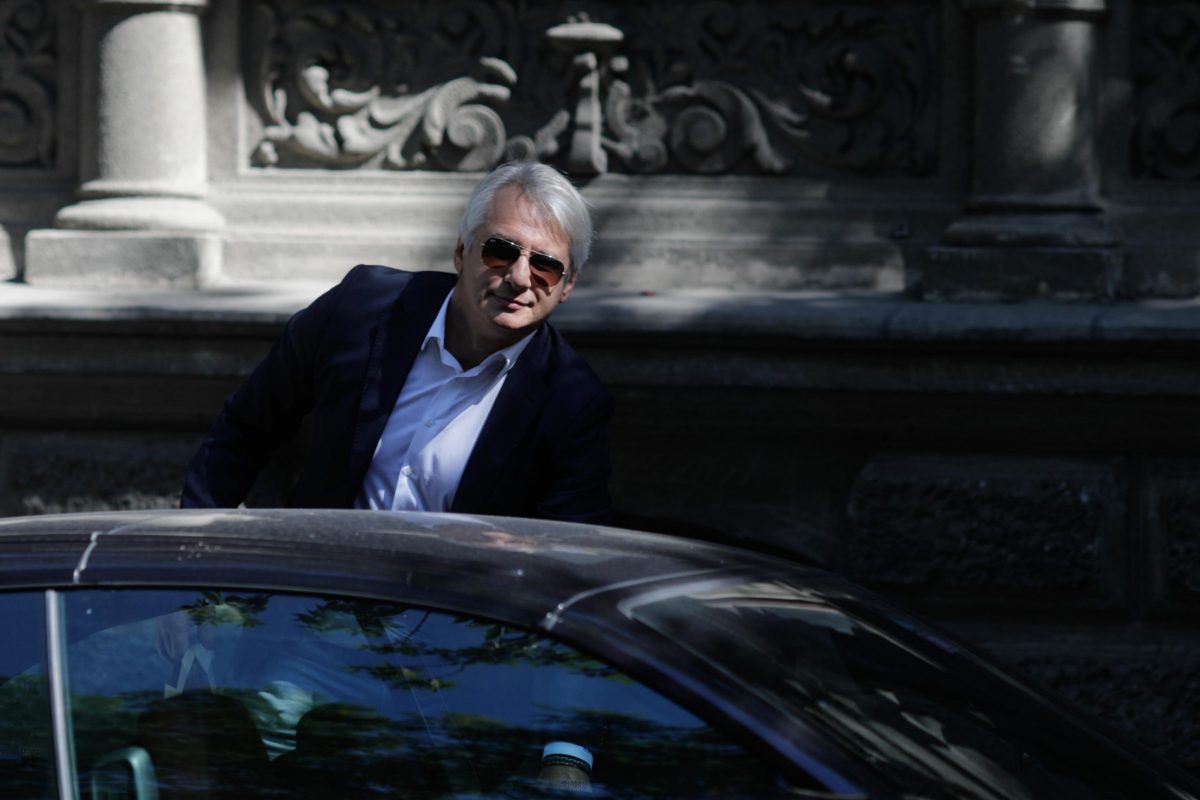
Profiting from an NGO
In the EU partnership agreement with Romania, an NGO was given a legally defined role within the ITI mechanism: Fisheries Local Action Group (FLAG) Danube Delta. FLAG is part of the EU’s official European Network of Fishing Areas programme and one of the key parts of the mechanism.
FLAG Danube Delta is supposed to be the bridge between the European Maritime and Fisheries Fund (EMFF) and local fishermen. In order to achieve this, FLAG Danube Delta received €9.3 million of EU funds. The average amount of funding for other FLAGs in Romania is €2 million.
Daniel Buhai, the president of FLAG Danube Delta, is also the president of Black Sea Commercial Fishermen’s Association RO-Pescador, which is a founding member of FLAG. Two of Daniel Buhai’s companies are founding members of RO-Pescador. Along with his wife Daniela Buhai, he has a substantial stake in SC Miadmar Fishing SRL. Together, Daniel and Daniela Buhai own S.C. Deltaica Seafood SRL.
Another company that helped to create RO-Pescador is SC Bbg Acces Consult SRL. George Buhai is the owner and Boris Buhai is the manager. They are respectively Daniel’s brother and nephew.
By the of November 2020, FLAG Danube Delta funded RO-Pescador to the tune of €590,000, of which approximately €440,000 came from EMFF funds. This funding was not unknown to the Tulcea County Council as the manager of FLAG Danube Delta, Valentin Moldoveanu, is a county councillor: he works with and answers to Horia Teodorescu.
As the manager of FLAG Danube Delta, Moldoveanu signed off on the funding to RO-Pescador. Just as he did for Petruș Fotea in 2019. Fotea is FLAG’s legal expert and owns the construction company SC Holiday Steel SRL. This company received from FLAG Danube Delta €18,400 for the “arrangement and endowment of accommodation spaces.” Fotea denies that this was a conflict of interest: his statement is here.
Valentin Moldoveanu states that in Fotea’s case the national and European legal framework was respected and the conflict of interests was avoided. Valentin Moldoveanu’s full answer can be read here.
For his work at FLAG Danube Delta, Moldoveanu earns €17,600 per annum, considerably more than his work as a counsellor at Tulcea County Council; €2,470 a year. In addition, he is on the Political Bureau of the Conference of Peripheral Maritime Regions, which advises the Commission on fishing policy and budgets. Horia Teodorescu is also a member of the Conference.

Daniel Buhai is not a poor man. Miadmar owns two fishing trawlers, modernised in 2004, and Deltaica’s factory can process up to 700 tons of fish annually. He even has considerable shareholdings in two fancy restaurants. Yet ITI Danube Delta funds have flowed to his industrial fishing companies.
In 2018, Deltaica was awarded €323,000 to upgrade fish processing equipment. Miadmar received €55,000 to establish a “small fishing shelter”. According to Deltaica’s website, annual sales in 2017 were just over two million euros. Daniel Buhai’s businesses directly benefited from the ITI Danube Delta mechanism and he claims that this led to the creation of forty jobs.
Along with the Romanian ministries responsible for ITI Danube Delta and the European Commission, Daniel Buhai in his capacity as president of RO-Pescador is on the EMFF Operational Programme Monitoring Committee. According to the European Commission, he is part of the oversight mechanism.
When asked about this, Daniel Buhai claims that he has not yet exercised his right to vote in the monitoring committee. Buhai also says that he does not participate in the project evaluation procedures and did not participate in the selection of the project obtained by RO-Pescador or FLAG precisely in order to avoid the conflict of interests. Daniel Buhai’s full answer can be read here.
Incidentally and according to his company’s website, Buhai’s commercial restaurants in Tulcea and Bucharest are “culinary projects” of RO-Pescador.
The big pocket of EU funds
ADI-ITI’s role in the mechanism is to provide public information about, implement and monitor the ITI. Petre Ilie, the President of ADI-ITI says, „Organising a strategy to a very limited territory, which has unique specificities offered by this biosphere, we succeeded to get a specific allocation from the big pocket of the European funds.”
Two contracts stand out within this organisation. The first involves Raluca-Andreea Bumbac. She is the interim coordinator of ADI-ITI, an expert in EU funds and a member of the selection committee for FLAG projects. Along with her husband, she owns Turism Crew Platform SRL.
This company received €110,000 from FLAG Danube Delta for „Innovative solutions for accommodation and leisure in the Danube Delta.” She denies this is a conflict of interest. She states that she wasn’t part of the selection committee that approved the project and her full statement is here.
The next unusual contract at ADI-ITI involves FLAG Danube Delta’s legal expert. Petruș Fotea is also a public procurement expert at ADI-ITI. His other company, Lake House Mineri SRL, received two consultancy contracts for “Advice in the field of public procurement.” These contracts netted him a total of €12,500 of ITI money. Fotea claims that it is not a conflict of interest for these contracts and the funding to his company because he did not take part in the decisions, verification or selection of the projects submitted to FLAG.
Both Raluca-Andreea Bumbac and Petruș Fotea came to the June 2017 meeting prepared. Fotea registered Lake House as a company four days before the meeting: Bumbac registered Turism Crew three days before.
Alexandru Dan Munteanu, a PSD member of the Tulcea County Council from 2016 to 2020, sits on ADI-ITI’s board. And his boss, Horia Teodorescu, doesn’t have to travel far to engage with ADI-ITI since its office and the offices of the Tulcea County Council are in the same building.
This is not the only influence Teodorescu has over ADI-ITI. An advisory committee directs the general flow of projects, provides a monitoring role and sets the agenda for meetings with the European Commission. Tulcea County Council is part of the advisory board, along with FLAG Danube Delta.
It was this advisory committee that organised the agenda for the June 2017 meeting.
Local Tulcea media reported that on the 23rd of October 2019 and at the opening conference of a FLAG Danube Delta project, Horia Teodorescu said, „I congratulate Valentin Moldoveanu for what he did, proof of his value in the activity he submitted to FLAG…it is a guarantee, from my point of view, that when you rely only on professional people, you get results.”
But not everyone sees it Teodorescu’s way. When Daniel Buhai ran for a position on the Tulcea Municipal Council in 2020, he wasn’t elected.
Neither did Tulcea see Eugen Teodorovici’s worth. But despite losing his bid to be reelected as a senator, Teodorovici is okay. He is now the audit director at Romania’s Court of Accounts where, as he states, he is responsible “for auditing the Danube Delta ITI Instrument and the expenses incurred within it.”
Dragging in national government
The Ministry of Regional Development and Public Administration (MDRPA) plays a significant role in the Commission’s investment. MDRPA is one of three ministries that channel the eight different EU funds to ITI Danube Delta. Both ADI-ITI and Tulcea County Council report to it.
MDRPA was at the June 2017 meeting.
The ministry is the key source of funding for Romania’s county councils and municipalities: she who controls MDRPA, controls the political base of the party. And during the implementation of ITI Danube Delta, the Tulcea local PSD power structure was deeply embedded in the MDRPA through the figure of Sirma Caraman.
Within Romanian ministries, the position of state secretary of a ministry is equivalent to that of a deputy minister. State secretaries are responsible for the implementation and monitoring of a particular ministry’s programmes and activities. Their role is often out of the spotlight but their power can be immense, sometimes far more than their ministers.
Sirma Caraman was a state secretary at MDRPA from 2014 to the end of 2019. Prior to joining the ministry in 2014, she was at the Tulcea County Council working in finance. She started at the Council in 1977 during Romania’s communist era. She then had a break for two years, between 1989 and 1992, when she worked at the Ministry of the Interior. She eventually reached the powerful position of the Economic Director of the Council in 2012.
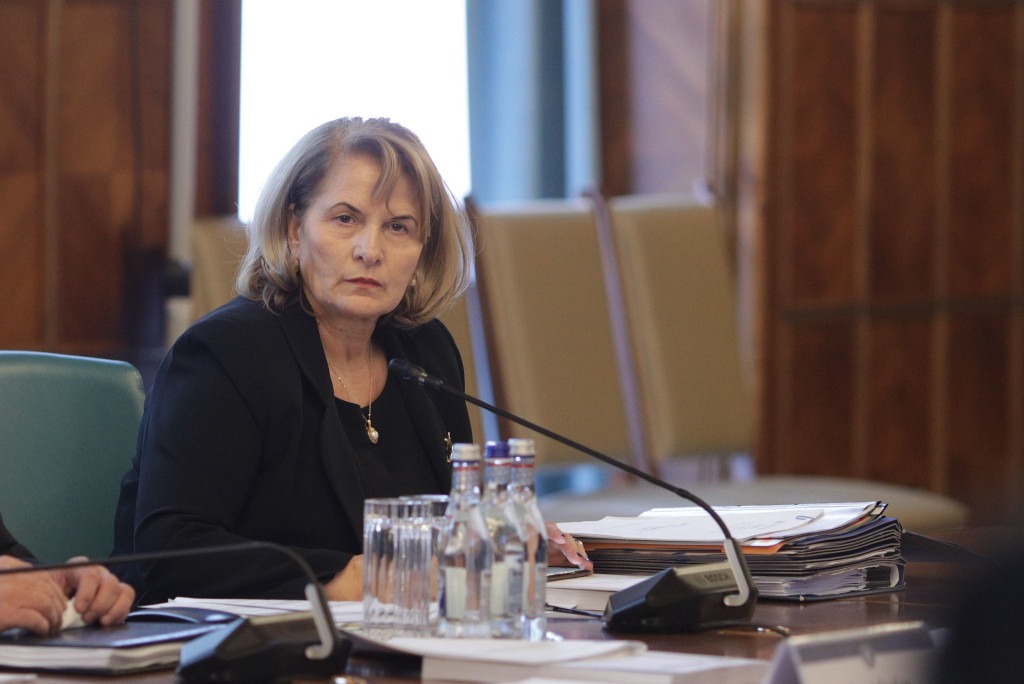
Like many former communist apparatchiks in Eastern Europe, she went into business after the fall of the iron curtain. With her late husband, Atanase Caraman, they founded a bakery in 1994 whilst keeping their political links. Anatase used to be a PSD councilor at Tulcea County Council.
The informal political power of a county council president in the PSD plays a substantial role in determining who becomes a state secretary: Sirma Caraman could not have achieved her position in MDRPA without Horia Teodorescu’s support.
In 2016, she transferred her shares in Cristian-Impex SRL to her son, Cristian Caraman, who is now the sole owner of the bakery. And the official documentation shows that Cristian-Impex SRL received ITI Danube Delta funding two years later: €318,000 for the acquisition of construction equipment.
How bakeries and construction mix remains an open question.
According to her wealth declarations and ADI-ITI documentation, Mirela Caraman worked at ADI-ITI until 2020 as an expert at obtaining EU funding. Her job was to get funds to support small and medium sized enterprises. Mirela Caraman is Cristian Caraman’s wife.
Both Sirma and Mirela Caraman declined to comment.
The Dutch connection
The corruption within Tulcea seems to extend across borders. On the 25th of November 2020, the National Anticorruption Directorate put Alexandru Filip Stroie on trial for attempting to defraud EU funds.
His father, Alexandru Stroie, had an old friendship with Teodorescu: according to him, he loaned Teodorescu €200,000 a decade ago but says he has no idea what the loan was for.
In order to prove he had the necessary 50% co-financing to obtain EU funds to build a new pastry production line at his company, Alexandru Filip Stroie borrowed US$3 million in 2018 from Brikston Cooperatif UA, a Dutch investment fund.
He then showed the Agency for the Financing of Rural Investments a bank statement indicating the funds were in his account. Three days after receiving the funds and to minimise the interest payment, Stroie transferred the money back to Brikston, paying USD$2500 in interest. Stroie has confessed to the charge of fraud and in February 2021 received a suspended one year and eight months prison sentence.
According to Andrei Bodean, another one of the major patterns of corruption is “businessmen who feel protected either by the political factor or by the power with which they feel invested due to their financial status.” He goes on to explain that “the more money they have, the more powerful and inconsiderate they feel about the law.”
Bodean is the prosecutor who caught Stroie.
The head rots first
According to his 2020 wealth declaration published on the Tulcea County Council’s website, Horia Teodorescu loaned €205,000 to his construction company SC Condor S.R.L., which he has 100% ownership of and formed in 1990 when he was thirty-two. He also received about €76,000 in dividends from his company, which is double his annual salary as the President of Tulcea County Council.
Like Buhai and others, Teodorescu has also personally benefited from EU funds meant to save the Delta. Administered by Robert Berbecel, SC Condor S.R.L. received €487,000 under the ITI Danube Delta mechanism.
The contract was for „creating a new accommodation unit in Tulcea County, in order to develop tourism in an area with high tourist potential.”
This “accommodation unit” appears to be located in a mostly empty multistory building in the city of Tulcea. Teodorescu owns the building through Condor. The building has no signs of touristic activity: not one single advertisement about tourism.
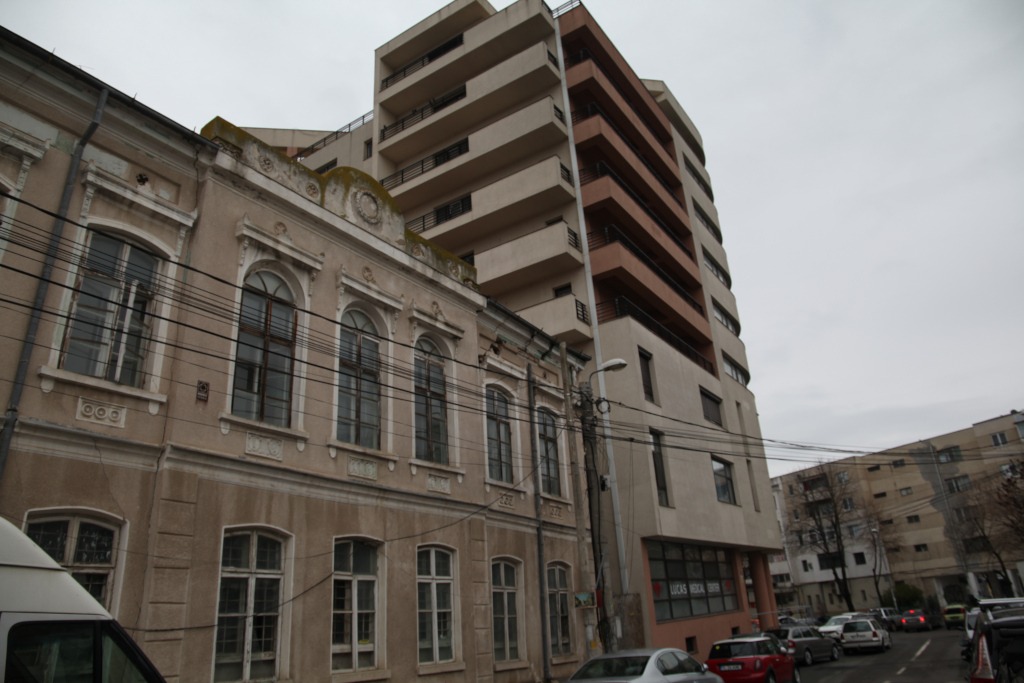
Horia Teodorescu’s edifice towers over a crumbling building. Lichiardopol House was where the Kingdom of Romania, after the Romanian War of Independence (1877–78), signed the agreement that Dobruja became part of Romania, after almost 500 years of Ottoman administration. Dobruja consists of the counties of Tulcea and the neighbouring Consţanta counties, which encompass the Danube Delta.
When we sought to confirm that the accommodation unit was in Teodorescu’s building, Tulcea City Hall informed us that the building’s construction permit is missing from the institution’s archives, stating that “the file was sealed by National Anticorruption Directorate prosecutors” in 2017. However, according to sources with the prosecutorial service, the National Anticorruption Directorate rarely takes original documents and, if it does, a copy is left in the archives.
Sirma Caraman was the state secretary for MDRPA when Teodorescu’s company received almost half a million euros for the “accommodation unit.” MDRPA was the managing agency for those EU funds.
Horia’s wife, Mariana Teodorescu, and Robert Berbecel also got their share of EU funds. Berbecel owns the company Infrabild SRL, which was allocated €422,000 from the ITI Danube Delta mechanism in 2018. The funds were for the company’s capital stock.
Mariana Teodorescu is a 49% beneficiary of Mimp SA. The company was awarded €421,000 from ITI Danube Delta in 2016 for the “acquisition of equipment”.
In March and June 2020, Condor received two ITI contracts for sewer works in Tulcea County: just over two and a half million euros. The total amount of taxpayer money Condor received from 2007 to 2020 is almost €15 million.
Horia Teodorescu, Mariana Teodorescu and Robert Berbecel all declined to comment.
Where is the European Commission?
There’s another key element to Teodorescu’s ITI contract for the “accommodation unit”. According to official documentation, the start date for the project was six months before the June 2017 meeting. The European Commission sat down with a man who was already receiving European taxpayers’ money. If they were monitoring their investment, they would have known that.
Yet the European Court of Auditors and European Anti-Fraud Office aren’t investigating. We asked them.
Commissioner Johannes Hahn, the man responsible for funding the ITI Danube Delta, has not had a single meeting with ADI-ITI during the past eight years according to the official list of his meetings. He also refused to be interviewed about or even comment on ITI Danube Delta.
After the June 2017 meeting ended on the 12th, the Commission representatives went to dinner. The next day they took a long boat ride to Sulina, the still fading shadow of yesteryear, and ate a “traditional lunch.” Then back to Tulcea for another dinner. On the morning of the 14th, they departed.
In June 2018, the second and last meeting between the Commission and ADI-ITI took place. There are no official minutes of this meeting. One billion euros and two meetings. The Commission has the power to suspend programmes if serious irregularities are found.
What happens next?
The jumble of the mechanism created the conditions for potential fraud and corruption. You don’t find a clear organisational chart in which the decision makers are easily identifiable. And, most crucially, there are no ongoing monitoring regulations specific to the mechanism: in the case of ITI Danube Delta, that ticking time bomb exploded.
For these reasons, Minister Ghinea would like to see smaller ITIs implemented in Romania and with very clear and well-defined organisational structures, strong programming and accountability. He regrets that Romania chose to put all the funds into a single ITI in one location.
Eugen Teodorvici knows that something is wrong. He says, “For ITI Danube Delta to be a success, some urgent measures are needed to adjust and accelerate the implementation of this instrument.”
The question is then will he audit ADI-ITI, FLAG, Buhai and Teodorescu?
“The production of this investigation was supported by a grant from the Investigative Journalism for Europe (IJ4EU) fund.”

Urmărește mai jos producțiile video ale G4Media:

Donează lunar pentru susținerea proiectului G4Media
Donează suma dorită pentru susținerea proiectului G4Media
CONT LEI: RO89RZBR0000060019874867
Deschis la Raiffeisen BankCitește și...
© 2025 G4Media.ro - Toate drepturile rezervate
Acest site foloseşte cookie-uri.
Website găzduit de Presslabs.
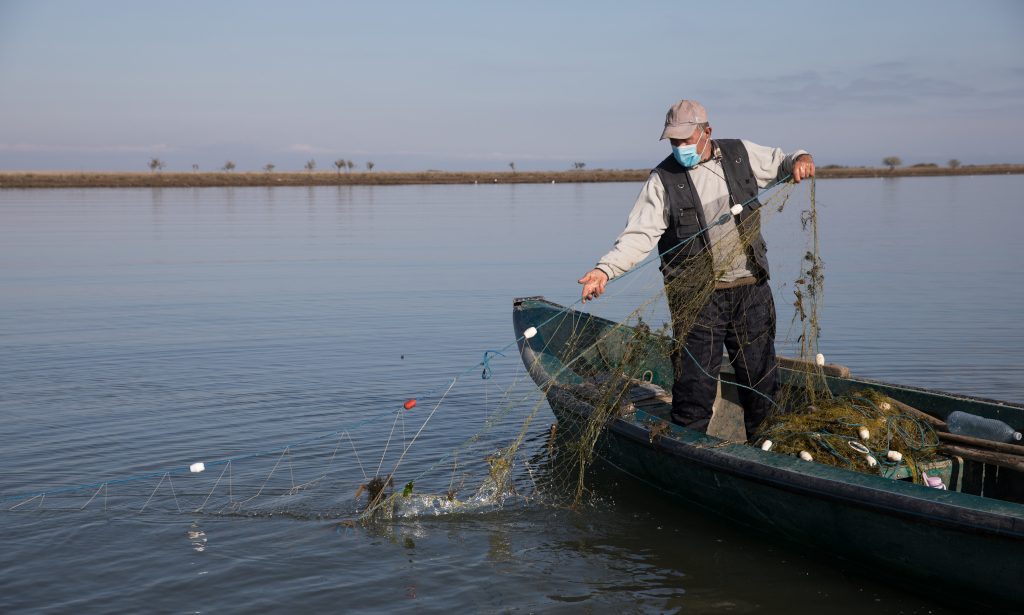

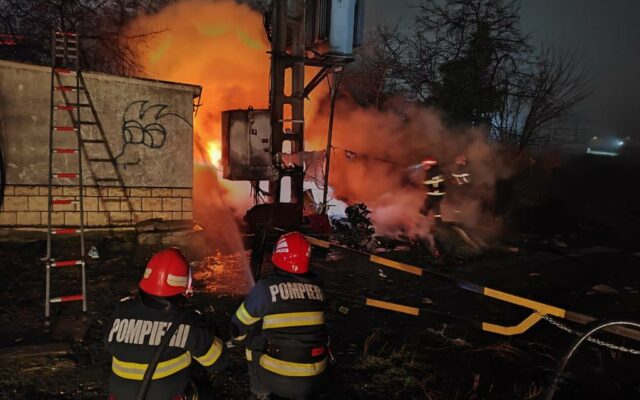
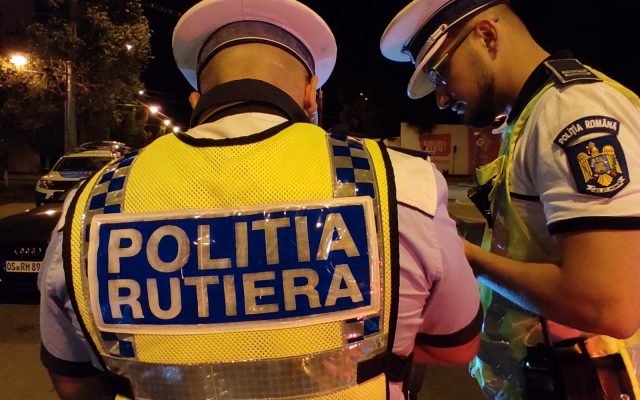
3 comentarii